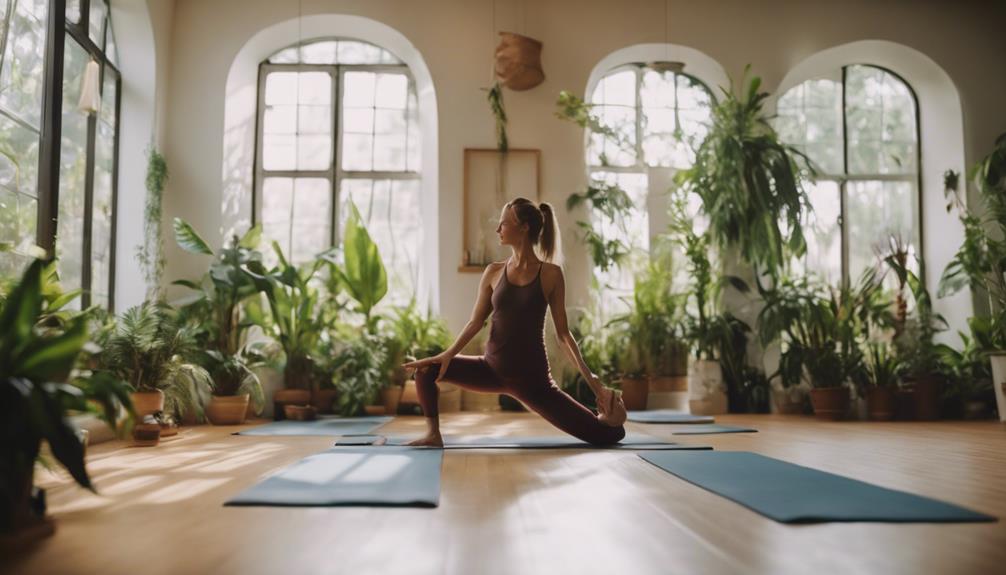How Much Yoga To See Results

Yoga has gained immense popularity in recent years as a holistic approach to fitness, health, and well-being. Many practitioners often wonder, “How much yoga to see results?” This question arises from the desire to understand the frequency and duration of yoga practice required to achieve tangible benefits. In this post, we’ll explore the various factors influencing your yoga journey, how often to practice, and the results you can expect along the way.
Understanding the Benefits of Yoga
Before diving into how much yoga you need to practice to see results, it’s essential to understand the myriad benefits yoga offers. From increasing flexibility and strength to reducing stress and improving mental clarity, yoga provides a comprehensive approach to physical and mental health. Studies have shown that regular yoga practice can enhance cardiovascular health, improve posture, and even boost immune function. Additionally, yoga promotes mindfulness, helping practitioners cultivate a sense of peace and well-being. All these factors contribute to the effectiveness of yoga as a transformative practice.
Frequency: How Often Should You Practice Yoga?
To see results from yoga, consistency is key. Most experts recommend practicing yoga at least 2 to 3 times a week. However, the frequency can vary based on individual goals, fitness levels, and lifestyle. If you’re seeking significant improvements in flexibility, strength, or stress reduction, increasing your practice to 4 to 6 times per week may be beneficial. It’s important to listen to your body and adjust your frequency accordingly. Consistent practice allows you to build on previous sessions, deepening your understanding of the poses and enhancing your overall experience.
Duration: How Long Should Each Yoga Session Be?
When considering how much yoga to see results, the duration of each session plays a crucial role. A standard yoga class typically lasts between 60 to 90 minutes. However, even shorter sessions can be effective. If time is a constraint, practicing for 20 to 30 minutes daily can still yield significant improvements over time. The key is to maintain focus and intention during your practice. Quality often outweighs quantity; therefore, a focused, shorter session can be more beneficial than a longer, distracted one.
Related Posts:
Types of Yoga: Choosing the Right Style for Results
The type of yoga you choose can significantly influence your results. Various styles cater to different goals and preferences. For instance, Hatha yoga is excellent for beginners looking to build a solid foundation, while Vinyasa is ideal for those seeking a more dynamic practice. Ashtanga and Power yoga provide a more intense workout, promoting strength and endurance. On the other hand, Yin yoga focuses on deep stretching and relaxation, which can be beneficial for stress relief and flexibility. Assess your goals and preferences to select the style that resonates with you, as this will enhance your commitment and enjoyment.
Listening to Your Body: The Importance of Mindfulness
An essential aspect of yoga practice is mindfulness—being aware of your body and its signals. As you explore how much yoga to see results, it’s vital to pay attention to how your body responds to different frequencies and durations of practice. Overexertion can lead to injuries, counteracting the benefits you’re striving for. Conversely, under-practice may yield slower results. Regularly check in with yourself during and after each session to determine what feels right. This self-awareness will help you tailor your practice for optimal results.
Setting Realistic Goals: What to Expect
When starting your yoga journey, setting realistic and attainable goals is crucial. Understand that results in yoga can vary based on individual factors such as age, fitness level, and previous experience. While some may notice improvements within a few weeks, for others, it may take several months to achieve significant changes. Common goals include enhancing flexibility, building strength, improving balance, or reducing stress levels. By setting specific and measurable goals, you can track your progress and stay motivated throughout your practice.
Complementing Yoga with Other Wellness Practices
To enhance your results from yoga, consider integrating complementary wellness practices into your routine. Proper nutrition, hydration, and adequate sleep are fundamental to supporting your yoga practice. Additionally, other forms of exercise such as cardio, strength training, or Pilates can provide a well-rounded fitness regimen. Mindfulness practices like meditation can further enhance the mental benefits of yoga. By adopting a holistic approach to your health, you can maximize the effectiveness of your yoga practice and see results more quickly.
Conclusion: Committing to Your Yoga Journey
In conclusion, the question of “How much yoga to see results?” is multifaceted and depends on individual factors including frequency, duration, style, and personal goals. By practicing consistently—ideally 2 to 6 times a week—and being mindful of your body’s needs, you can expect to see improvements over time. Remember that yoga is a journey, not a destination. Embrace the process, celebrate your progress, and enjoy the numerous benefits that yoga brings to your life. Whether you seek physical strength, mental clarity, or emotional balance, committing to a dedicated yoga practice will undoubtedly lead you to transformative results.Sofa YogaIs Yoga-Go A Good ProgramWhat Yoga Poses Help With Bloating